Some of the links in this post may be affiliate links.
Calathea ornata, commonly known as Pinstripe Plant or Pinstripe Calathea, is a gorgeous foliage plant and member of the prayer plant family (Marantaceae). This tropical plant can be notoriously finicky as an indoor plant, so I wanted to cover some very important tips in order to keep your plant looking great!
Like any plant in the prayer plant family, the leaves fold up and point up at night and then settle back down during the day.

The large, dark green leaves often have pink stripes, in addition to beautiful reddish-purple undersides. The pink stripes on the foliage will tend to turn white over time.
This post will cover everything you need for your Calathea ornata plant including:
- Light
- Water
- Fertilizer
- Soil
- Humidity
- Temperature
- Pests
I’ll also touch a bit on propagation and answer some commonly asked questions.
Table of Contents
HOW TO CARE FOR A CALATHEA ORNATA
Just a quick note that many of us still refer to this plant as Calathea ornata, but the accepted species name is Goeppertia ornata.
These tropical plants, native to the jungles of South America (Colombia and Venezuela) can be fussy indoors, but here are some specific tips to help your plant thrive.
1. LIGHT
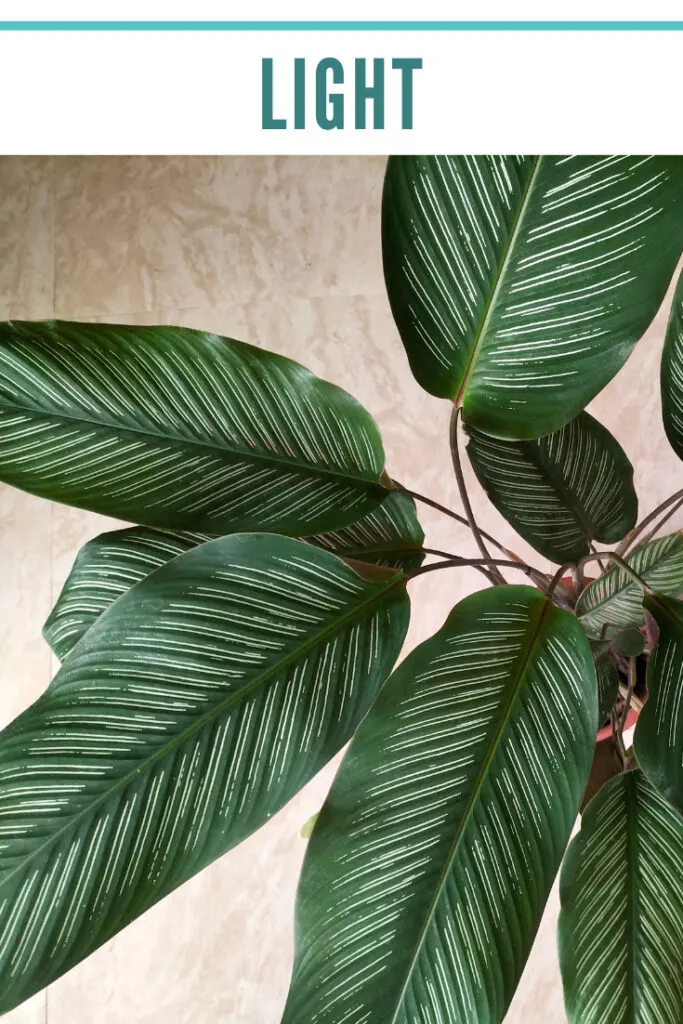
The Pinstripe Calathea plant, like any Calathea, enjoys bright indirect light. You’ll want to have a good balance between not enough light and too much light.
If you live in the northern hemisphere, a north facing window, especially a large one, would work well since this exposure gets no direct sun.
(If you are in the southern hemisphere, this is reversed and southern exposure windows would get no direct sun).
In most cases, an Eastern exposure window is an ideal location for this plant. This exposure provides gentler morning sun.
Avoid locations that have too much direct sunlight, and try and avoid direct sun in the middle part of the day which can be too strong.
If all you have are extremely sunny windows, go ahead and either set your plant back a little further back from the window, or you can diffuse the light with sheer curtains or partially closed blinds.
If you want to get a little more technical, the UF/IFAS Mid-Florida Research and Education Center (MREC) recommends 1000-2000 foot candles of light for optimum growth.
If you’d like to play around with measuring light intensity, I like to use the Dr. Meter LX1330B to get an idea of light levels. It’s very revealing to use and you can get a more objective view on quantifying light.
2. WATER
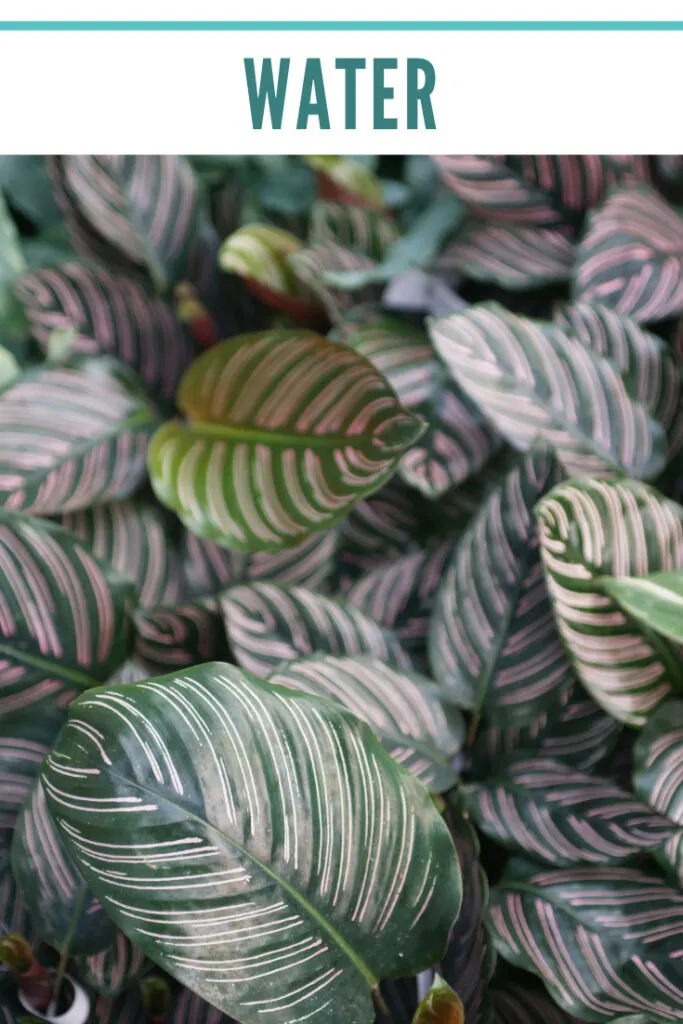
Moisure Levels
Proper attention to soil moisture, as well as water quality, is a very critical aspect in helping to keep your ornata in good shape.
These plants do NOT like to dry out, so it is very important to keep a close eye on your soil moisture. For best results, water when the top inch of soil is dry.
Maintaining a fairly evenly moist soil (while letting just the surface of the soil dry out), will go a long way for your plant.
If you let your potting mix go completely dry, especially repeatedly, your plant will quickly respond with numerous, ugly, crispy brown tips and edges on the foliage.
At the same time, never let these plants sit in water for extended periods of time. Always empty out excess water from the saucer below.
Or if you have your plant growing in a nursery pot and slipped into a decorative pot with no drainage hole, be sure to check for any accumulated water and discard.
Letting your plant sit in water for extended periods will contribute to the dreaded root rot.
Water Quality
Water quality is important for Calatheas if you want to try and achieve a pristine looking plant.
Calatheas are notoriously finicky and sensitive to hard tap water as well as fluoride in water and will often develop brown, crispy leaves over time.
You certainly can use tap water, but if you have experienced brown edges and want to take your Calathea care to the next level, try using distilled or RO water for a period of time and monitor the new growth.
If you don’t want to bother with buying distilled water or setting up a complicated RO water system, don’t miss my post on the best distilled water alternative for Calathea plants. You will thank me for it!
Avoid using cold water to water your plant. Room temperature or lukewarm water is preferable.
If you don’t live in a heavily polluted area, rain water is a wonderful option to use for your plants!
Remember that once leaf edges turn brown, they will stay that way so you’ll have to monitor the new foliage over time to see the true effect.
3. FERTILIZER
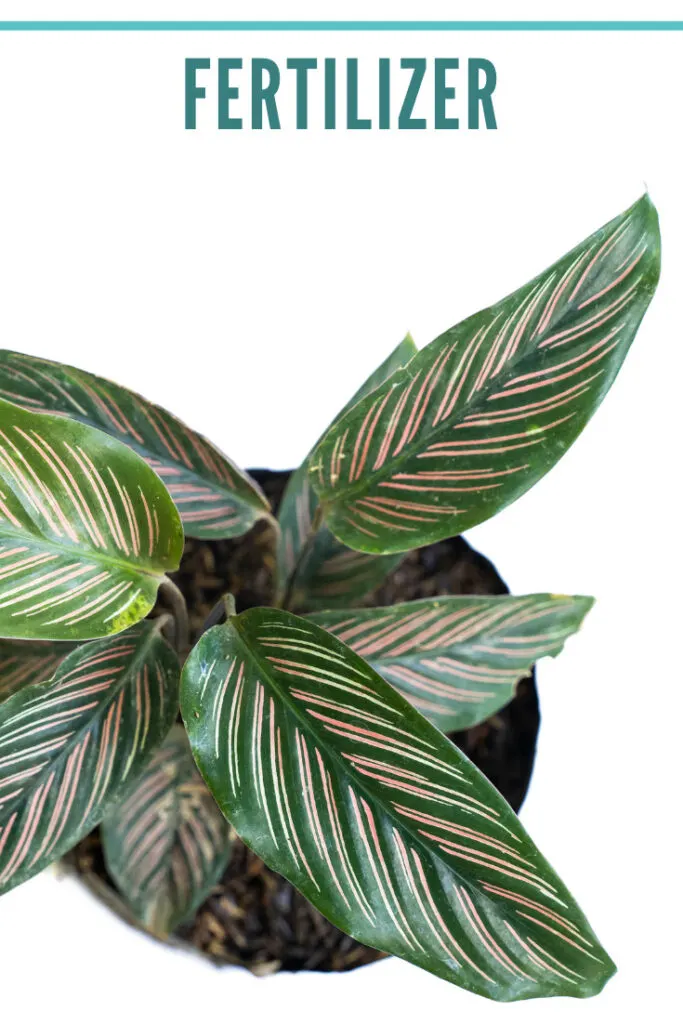
I like to use Dyna-Gro Grow fertilizer for all my tropical foliage plants. It is urea-free and contains all the micro and macro nutrients that plants need to grow.
I fertilize dilutely, and simply use the recommended 1/4 teaspoon per gallon of water and use it every time I water. This dilution is recommended for fertilizing with each watering.
For Calatheas, which can be sensitive to built up fertilizer salts in soil, you can periodically just water with plain distilled water to flush out any accumulated salts in the soil which can contribute to brown leaf tips.
4. SOIL
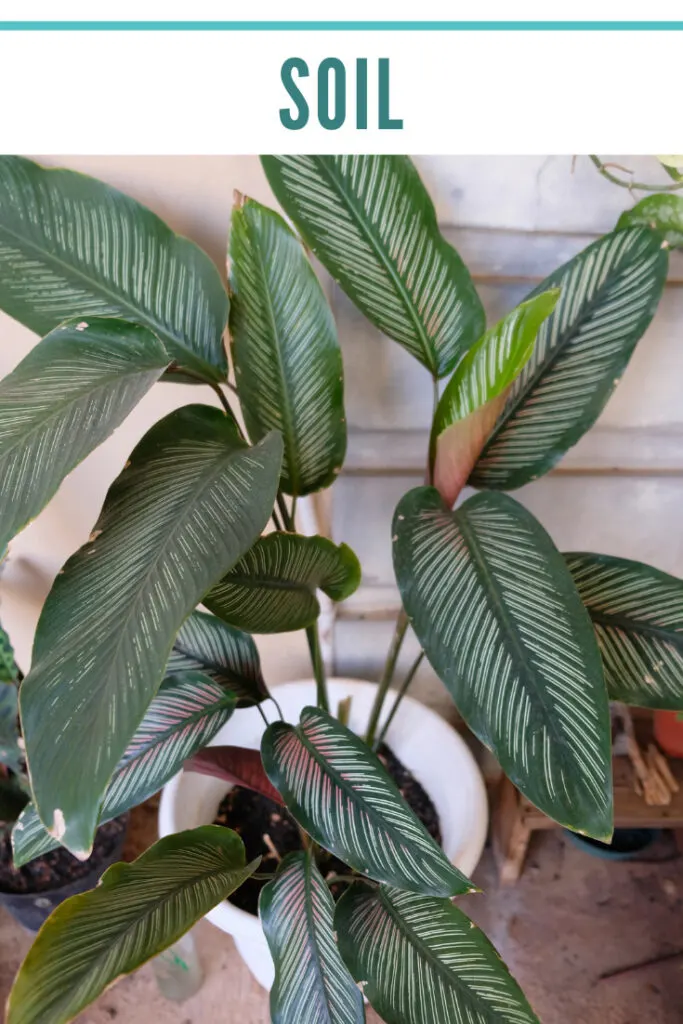
Although any Calathea plant needs a well-draining potting mix, they do still enjoy a moisture-retentive mix.
Many different potting soils will work, so choose one that works for you.
Here are some example you can try:
- 3 parts of a good all-purpose mix (like Espoma organic) plus either 1 part perlite or 1 part pumice. Pumice has the advantage of not floating to the surface like perlite does.
- One wonderful organic potting mix that is ready to use out of the bag is the Pray For Us mix which is made by Oh Happy Plants (and you can use it straight out of the bag without adding anything.)
- The University of Florida recommends a 3:1 ratio of peat to sand as a good medium. (Coarse sand is best).
The University of Florida also recommends a soil pH level of 6.5 (slightly acidic) if you want to monitor your soil pH.
ALWAYS use pots with drainage holes. It is too risky not to.
5. HUMIDITY & TEMPERATURE
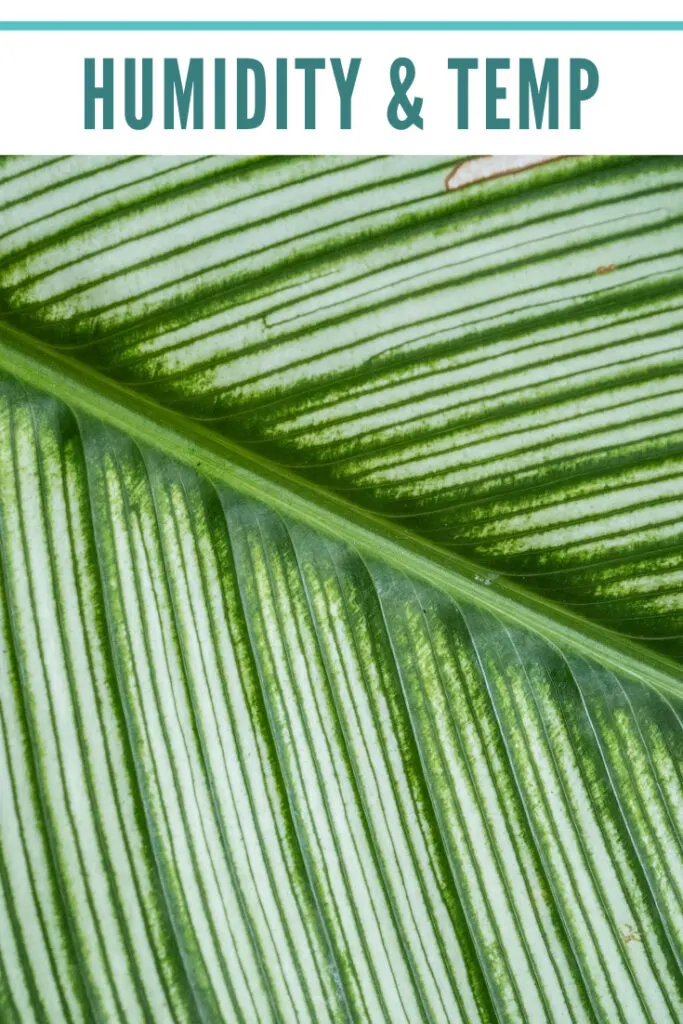
HUMIDITY
Calathea ornata, like any member of the prayer plant family, do best in high humidity environments.
What can you do to
I do not recommend misting, especially misting compulsively. Why? First, it does nothing to increase the the relative humidity level of your air.
Secondly, if you overdo misting, leaves that remain wet for prolonged periods can encourage fungal diseases.
So what can you do to
In the average home, it is impractical to achieve jungle levels of humidity, but some attention to elevating humidity is very important.
If you live in a cold-winter area and use forced heat, it is especially important during this time to raise your humidity since the air can get really dry.
Try and achieve 50-60% humidity if you can (and provide some air circulation as well if you can with a ceiling fan or small fan gently moving the air in your plant area).
If you need help with choosing a humidifier, check out my top 3 picks for humidifiers.
TEMPERATURE
It is important to remember that these plants grow in tropical climates, so warm temperatures are a must!
Try and keep temperatures in the 60F-85F range for best results. Avoid any areas with cold drafts (and even dry, hot drafts from any heater vents).
6. PESTS
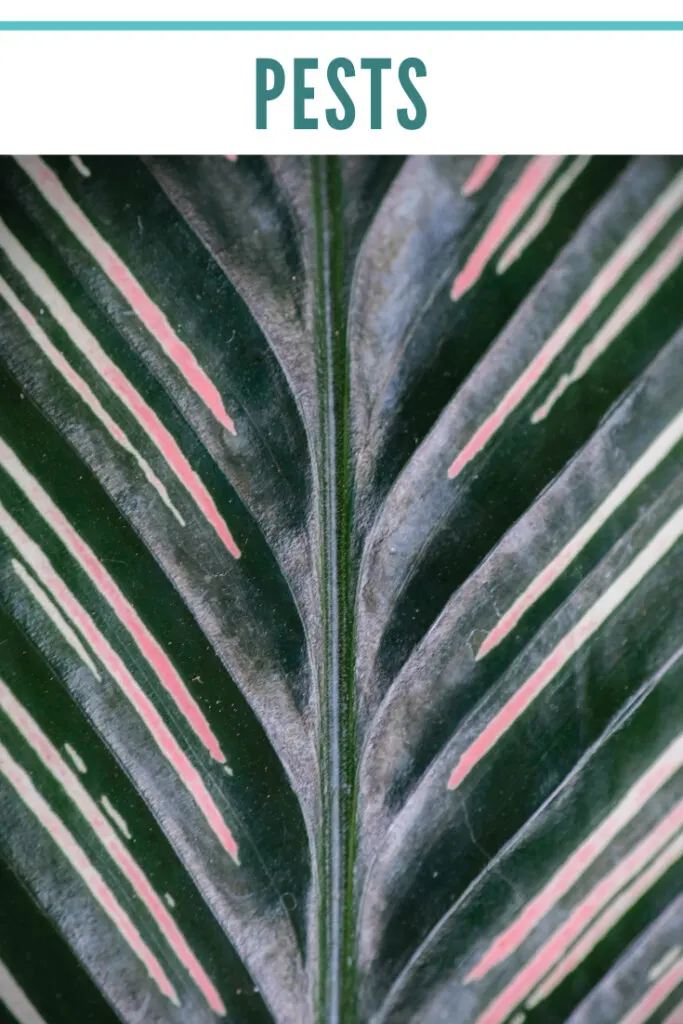
Calathea can be prone to spider mites, fungus gnats, and other pests.
Spider mites can be discouraged by maintaining more humid environments. Spider mites thrive in conditions with dry air.
As a precaution, to help prevent and manage spider mites, you can give your plant a gentle rinse once a week with lukewarm water in your sink or shower.
If you have spider mites, check out my post on how to treat spider mites.
Fungus gnats can also be an issue. They thrive in soil that stays constantly moist (which can be a catch-22 with Calatheas!)
7. HOW DO YOU PROPAGATE CALATHEA ORNATA?
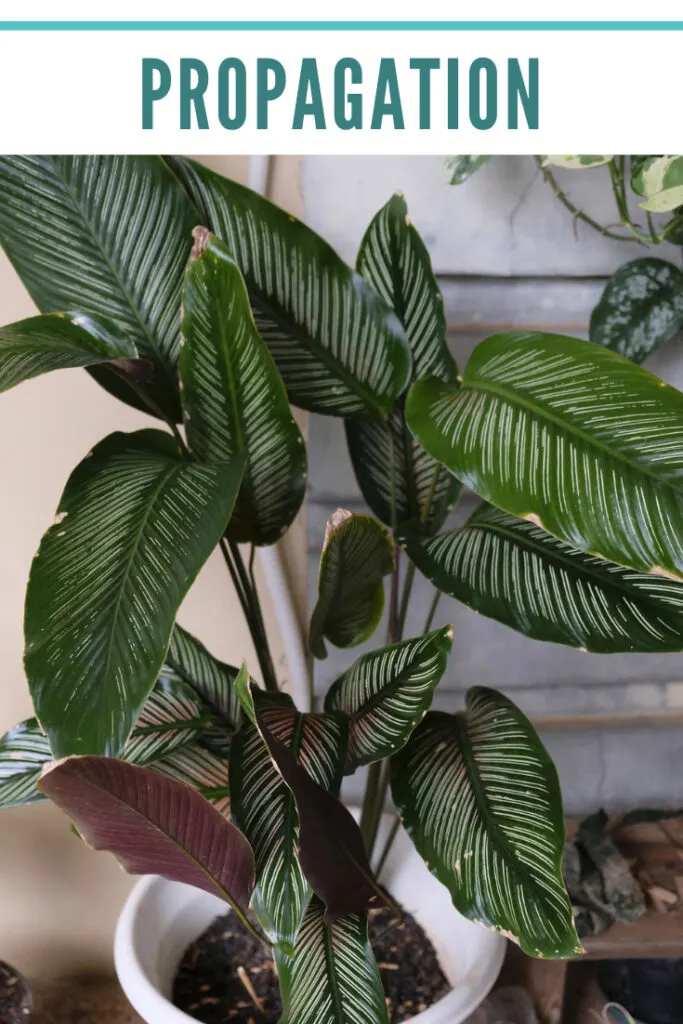
The most practical way to propagate is by dividing your plant, and is best done during the active growing season.
This is most easily done with it’s time for a bigger pot and is time to repot. Over time, your plant will grow into a clump with multiple plants in the same pot.
Simply remove the plant form it’s pot, and gently tease the plant apart at the roots into any many separate plants as you’d like.
If the roots are tightly bound, you may need to use a pair of sterilized, sharp pruning shears to separate individual plants (just make sure each clump still has some roots attached!)
It helps to water your plant the day before to make this task easier.
CALATHEA ORNATA COMMON PROBLEMS & QUESTIONS
Why are my Calathea ornata leaves curling?
This can be caused by multiple factors, so you’ll have to determine which applies to your plant. Curling leaves can be due to cold temperatures or drafts, and very often times, from your plant’s soil drying out too much. It can also be due to your soil staying water logged for extended periods of time and your plant has started to develop root rot.
Why is my Calathea ornata not growing?
The most important factor in growth is light. If you have your plant situated in a dark area, far away from a window, move your plant to a brighter location. Of course, you will still need to pay attention to proper watering, temperature, etc.
Is Calathea ornata poisonous to pets?
According to the ASPCA, Calathea plants are non-toxic to dogs, cats and horses.
Why is Calathea ornata getting brown, crispy leaf edges?
This can be caused by multiple reasons. Soil that has gone too dry is a very common cause, as well as low humidity. Too much direct sun can also sometimes contribute to this. Calatheas are notoriously sensitive to water quality and very hard tap water can also sauce brown edges. Fluoride in tap water can also contribute to brown tips.
Why is my Calathea ornata getting yellow leaves?
The most common reason for yellow leaves are extremes in soil moisture. Calathea will quickly protest in soil that has gone completely dry and the older leaves will normally proceed to yellow first. On the other end, yellow leaves can also be a sign of root rot.
Why is my Calathea ornata getting pale leaves and faded stripes?
If you’re not providing enough light, this can cause the leaves to turn more pale and start to lose the distinctive stripes
If you’ve enjoyed this post, check out my post on the various, stunning Calathea varieties that you can grow in your home!

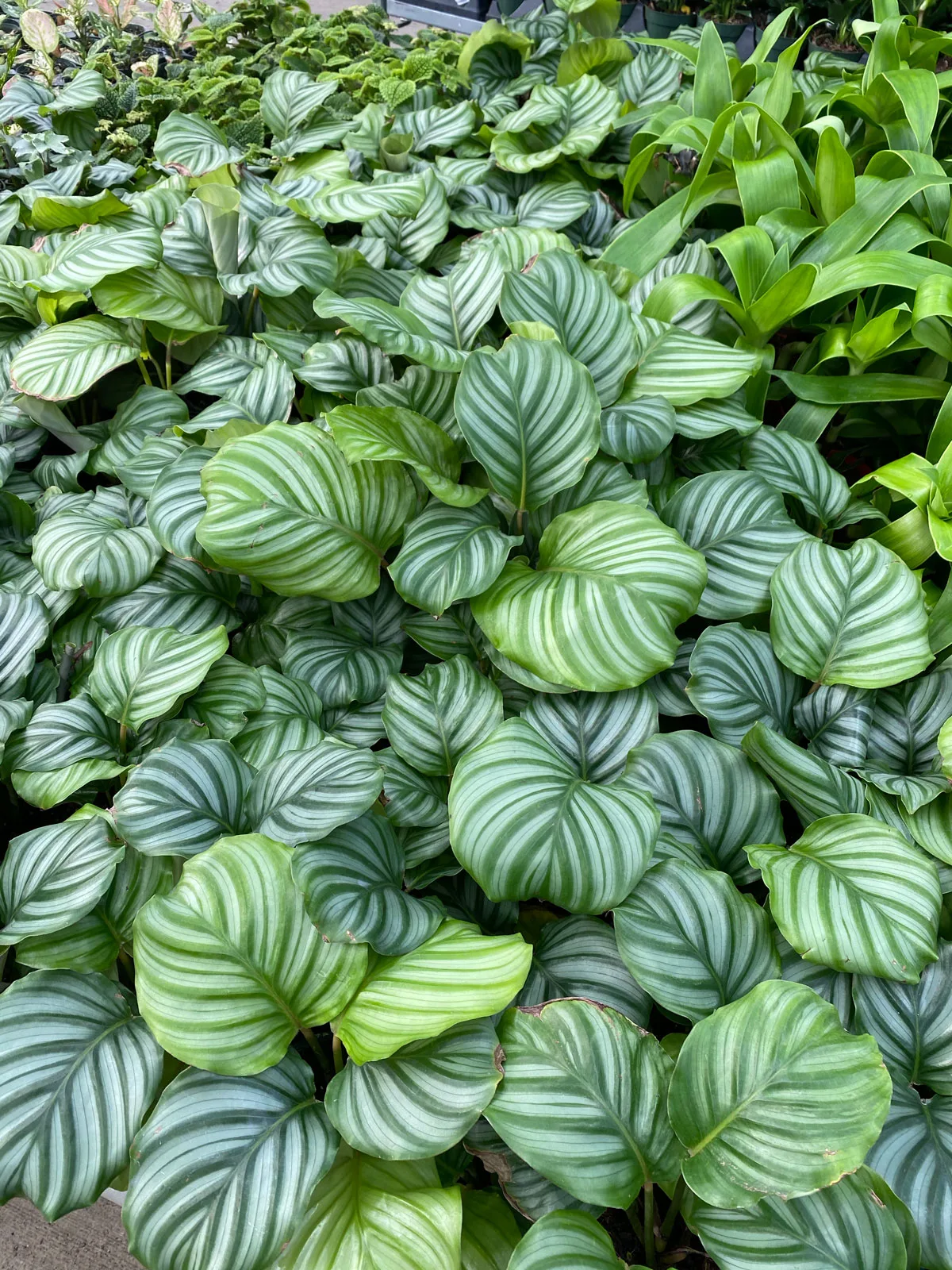
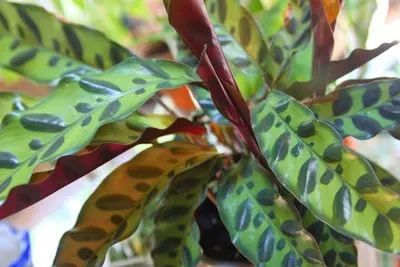
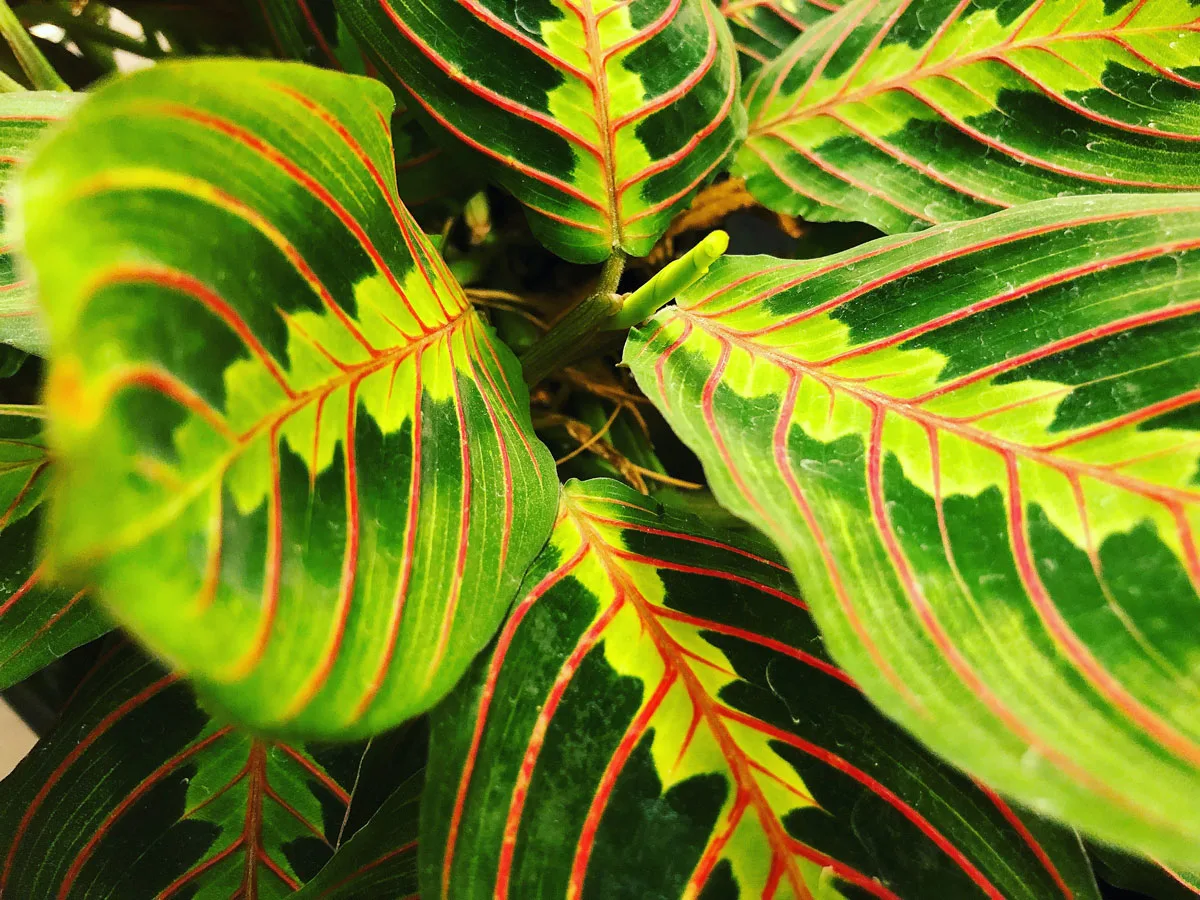
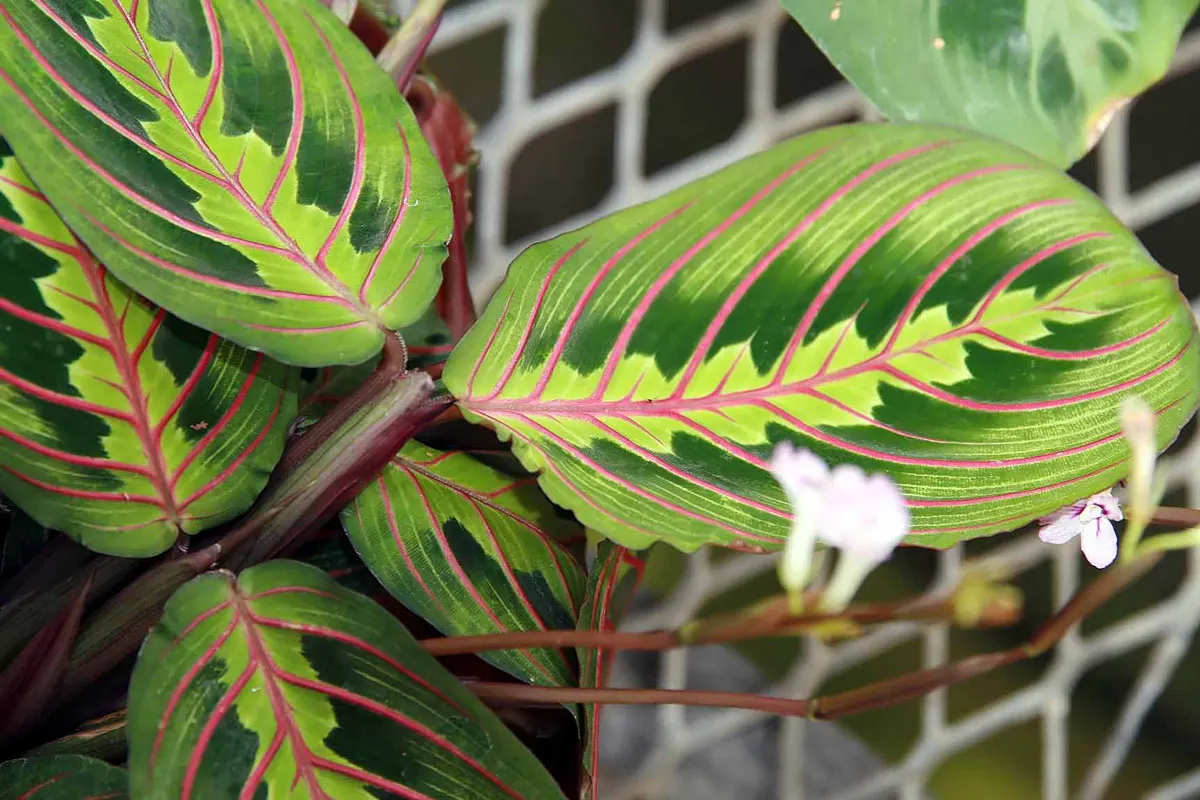
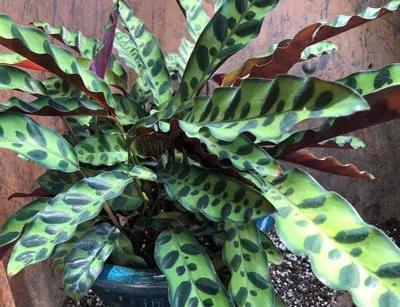
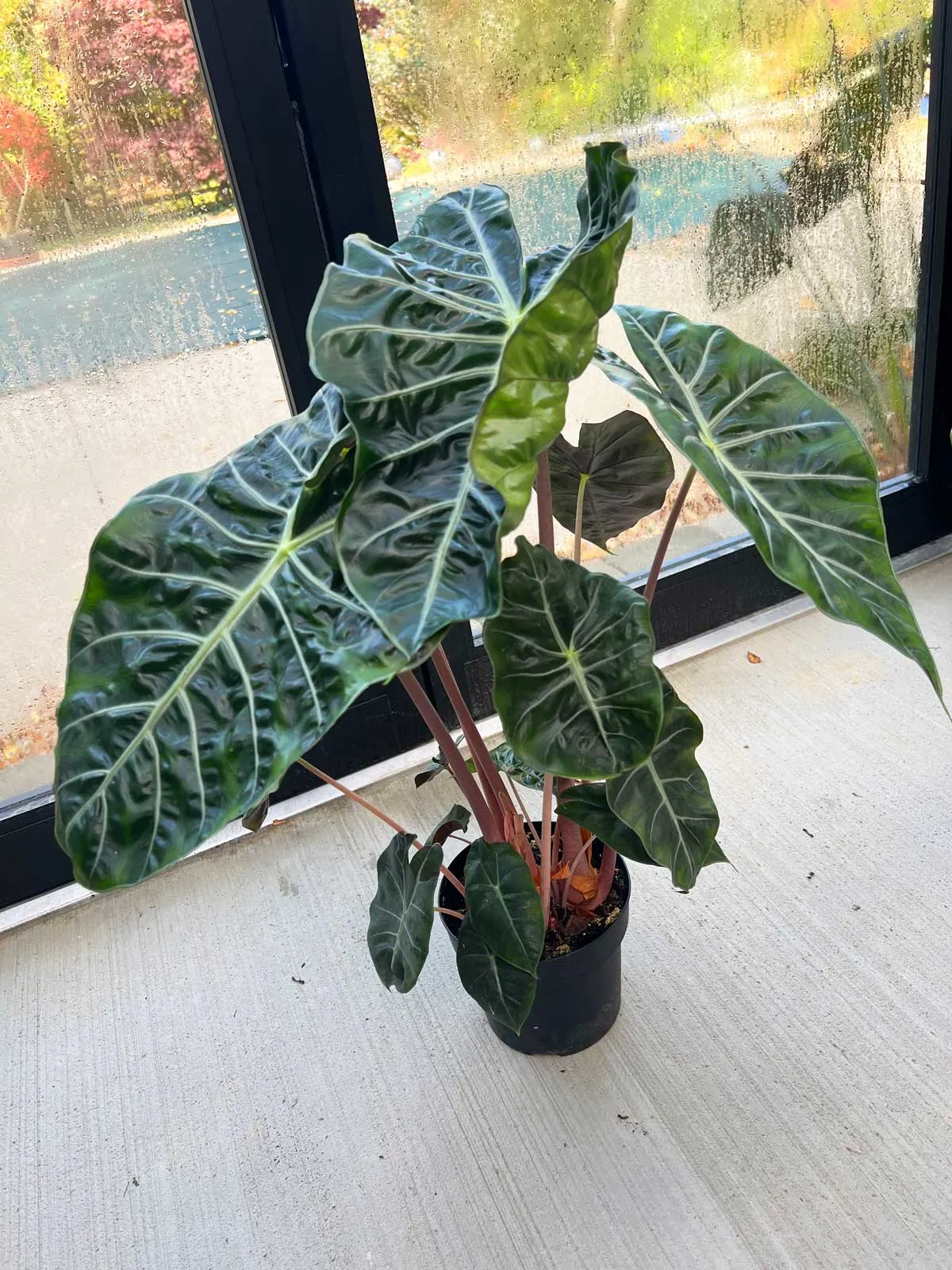
Alex
Saturday 15th of January 2022
What is the N:P:K of your recommended fertiliser?
Raffaele
Monday 17th of January 2022
I use Dyna-Gro Grow on most of my indoor plants and it is 7-9-5.